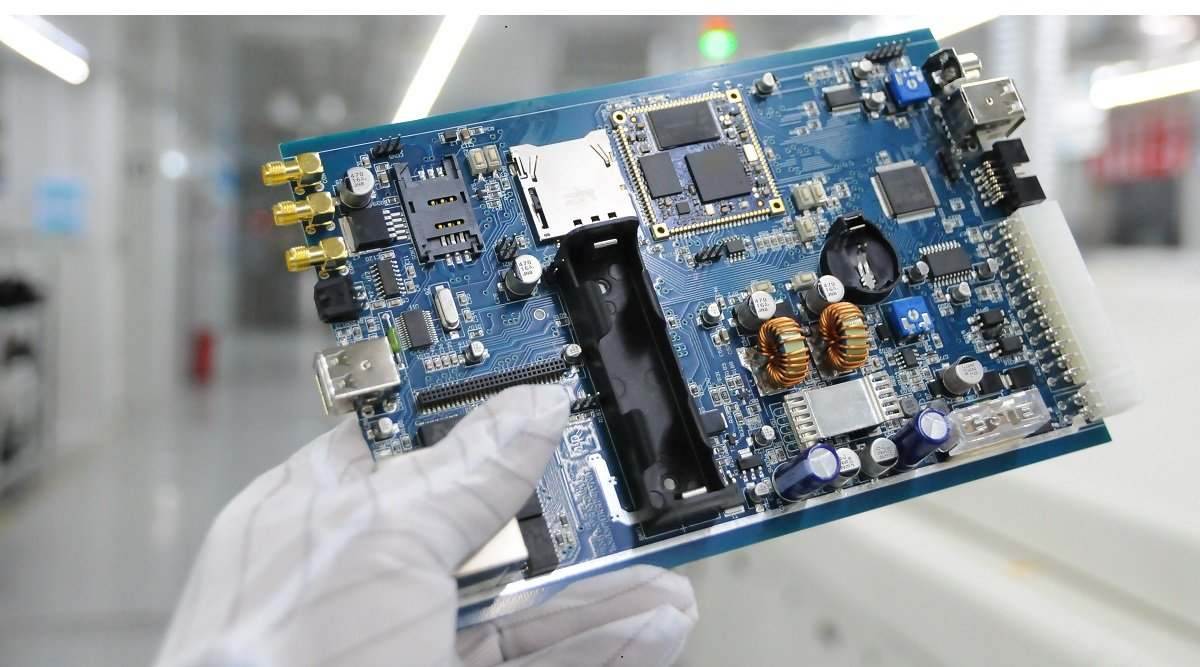About us
FASTPCBA Co.,Ltd
-
 Building 1, Senyang Electronic Technology Park, Guangming High-tech Park, Yutang Street, Guangming District, Shenzhen City.
Building 1, Senyang Electronic Technology Park, Guangming High-tech Park, Yutang Street, Guangming District, Shenzhen City.
-
 F:86-13418481618
F:86-13418481618
-
 pcba13@fastpcba.cn
pcba13@fastpcba.cn
 date:2019-12-09 15:10:01
date:2019-12-09 15:10:01
In PCB manufacturing dispensing common defects and solutions
Some drip coating defects often occur in PCB manufacturing, such as wire drawing / tailing, discontinuities in glue dot size, no glue dots, and satellite dots.

(1) Drawing / tailing
Drawing and tailing of glue is a common phenomenon in the drip coating process. When the needle is removed, a thin line or "tail" is generated on the top of the glue point. The tail may collapse, directly contaminating the pad, and causing virtual soldering.
One of the reasons for wire drawing /tailing is that the process parameters of the dispensing machine equipment are not adjusted properly, such as the internal diameter of the needle is too small, the dispensing pressure is too high, and the distance between the needle and the PCB is too large. Or it has expired, the board is bent or the board is not sufficiently supported, etc.
In view of the above reasons, it is possible to adjust the process parameters of PCB manufacturing, replace the needle with a larger inner diameter, reduce the dispensing pressure, adjust the height of the needle from the PCB, and replace the adhesive glue. Can be heated on or near the dispensing needle to reduce viscosity and make the glue's wire drawing / tailing easy to break
(2) Satellite points
It is a small, irrelevant glue spot produced during high-speed dispensing. In contact drip coating, it is usually caused by the tail and needle disconnection. In non-contact spraying, it is caused by incorrect spray height. Satellite points can cause pollution. In contact dispensing, often check whether the needle is damaged, adjust equipment parameters, and prevent tailing to reduce the occurrence of satellite points. In non-contact spraying, adjust the height of the spray head and PCB to help reduce satellite points
(3) Popcorn and hollow
This is because air or humid gas enters the adhesive glue, and suddenly bursts or forms voids during curing. Popcorn reduces the bonding strength and opens the path for the solder to penetrate under the component, resulting in bridges and short circuits.
The solution is to use low-temperature slow curing and prolong the heating time, which is beneficial for the moisture to be discharged before curing. Minimize the time between mounting and curing, and correctly store, manage and use adhesive glue. For self-filled adhesive glue, debubbing treatment is required.
(3) Low run-out or less glue output
If there is only the dispensing action during dispensing, but no glue volume or a small amount of glue from the needle, generally there are three reasons: air bubbles are mixed in the patch glue, the needle is blocked, or the air pressure in the production line is insufficient.
The glue in the injection needle should be degassed, especially the glue installed by yourself; the clean needle is often replaced; the machine pressure is adjusted appropriately, and if frequent jams occur, you can consider replacing the adhesive glue of other brand
(4) Discontinuous glue points
The reasons for the discontinuous glue point are; the needle's thimble falls on the pad, and a different needle can solve this problem. The recovery time is not enough. Increasing the delay can solve the recovery problem; then, as the horizontal line of the rubber surface drops, the pressure time is not enough to complete the dispensing cycle. The problem of discontinuous dot size can be corrected by increasing the ratio of pressure to cycle time.
(5) Element displacement
After curing, the component will be displaced, which will cause an open circuit in severe cases. The reason is that the amount of glue is too small, the initial adhesive force of the adhesive glue is low, and the PCB is placed for a long time after dispensing, which causes the component to shift during placement. In addition, too much glue will cause component displacement. First, check whether the glue point is uneven, and then adjust the working state of the placement machine to make the placement height more suitable. At the same time, the patch adhesive can be replaced, and it is stipulated in the PCB manufacturing process document that the PCB mounting time after dispensing is generally not more than 4h.
(6) Component dropping after curing and wave soldering
The main reasons for component dropping after soldering: low curing temperature: insufficient glue; contamination of components or PCB will also cause chip dropping. Retest the curing curve of the PCB, paying special attention to the curing temperature and adjusting the curing curve. When light curing, it should be observed whether the light curing lamp is aging and the lamp tube is black: the diameter and height of the glue point need to be checked; the component or PCB should also be checked for pollution.
(7) Displacement of component pins floats after curing
After curing, the component leads float, and the solder will enter the pad after PCB manufacturing wave soldering, and short circuit and open circuit will occur in severe cases. The main reason is that the amount of glue on the chip is too much, and the component is shifted when mounting.
The solution is to adjust the dispensing process parameters, control the amount of dispensing, and adjust the placement process parameters so that the placement components do not shift.
 Building 1, Senyang Electronic Technology Park, Guangming High-tech Park, Yutang Street, Guangming District, Shenzhen City.
Building 1, Senyang Electronic Technology Park, Guangming High-tech Park, Yutang Street, Guangming District, Shenzhen City.
 F:86-13418481618
F:86-13418481618
 pcba13@fastpcba.cn
pcba13@fastpcba.cn